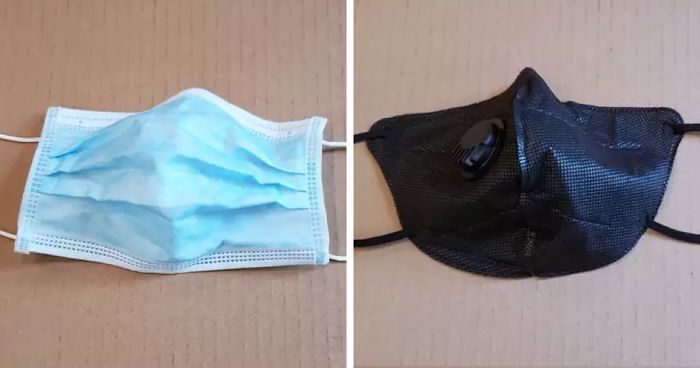
Scientists Test The Efficacy Of 14 Masks, Find One Actually Increases The Risk Of Getting Infected
As the world is experiencing a surge in coronavirus cases after reopening and relaxing social distancing restrictions, it’s becoming clear that face masks should once again be a part of our daily lives. And at this point, we’d better know which masks really protect us and which ones just make things worse.
The team of scientists at Duke University in North Carolina carried out tests on 14 face coverings of different styles, from cotton masks to bandanas and neck fleeces. They employed an optical measurement method using a camera and laser pointer to illuminate particles emitted by a person when wearing each face covering.
The tests showed which masks are more and less effective. So, let’s take a look at the illuminating results down below.
The researchers at Duke University tested these 14 different styles of face coverings to see how effective they really are
Image credits: dukehealth
Three-layer surgical masks performed well at stopping the spread of the coronavirus
The valved N95 masks do not compromise the protection of the wearer, but can decrease protection of others surrounding the wearer
Knitted masks performed next worst in stopping the droplets
Polypropylene masks came in third best in protecting from the virus
The one-layer Maxima AT mask didn’t stand out from the other masks
Cotton masks that can be made at home also proved to be effective at stopping the spread of the virus
The Loser. Neck fleeces performed the worst because the material broke down large droplets into smaller ones that spread into the air more easily
Duke University researcher Martin Fischer, who conducted the test, said they were extremely surprised to find that “the number of particles measured with the fleece actually exceeded the number of particles measured without wearing any mask.”
Bandanas did not provide much protection
The Winner. N95 non-valved masks used by healthcare professionals proved to be the best at stopping the transmission of respiratory droplets
Image credits: dukehealth
The study’s authors compared the dispersal of droplets from a participant’s breath while they were wearing one of the 14 coverings to the results of a control trial where their mouth was fully exposed.
In conclusion, N95 non-valved masks performed the best and neck fleeces the worst at protecting from the virus
Image credits: dukehealth
A visual aid shows how the laser beam and sheet of light work to capture respiratory droplets
Image credits: dukehealth
The team of scientists used a black box, a laser, and a camera to measure respiratory droplets and mask effectiveness in withholding them. A simple computer algorithm then counted the amount of droplets with each mask.
The video shows how scientists at Duke University ran the experiment on the effectiveness of facial coverings
Image credits: dukehealth
Plus, the measurement setup is an inexpensive tool that can be easily built and operated by non-experts. The team concluded that it would “allow for rapid evaluation of mask performance during speech, sneezing, or coughing.”
Fischer also told CNN the experiment helped to raise awareness that “very simple masks, like these homemade cotton masks, do really well to stop the majority of these respiratory droplets.”
And this is what people had to say about the results
You wear your mask mostly to protect others, and hope that others make that same choice to protect you. Someone wearing a mask is respecting the people around them. Pls wear a mask y'all. Even here in Nz we are re initializing the emphasis, with sadly our first case today that wasn't an incoming traveller in isolation, but instead a local family. Our wake up call. If we in NZ need masks, everyone does
I'm so sorry to hear the virus is back in NZ. 100 days without a local infection and now this
Load More Replies...It is dreadfully laid out. Starting from 1. Performed well 2. Good for you but perhaps not others 3. Next worst (I thought the first two were ok!) 4. Is 3rd best (huh?) and 5 has no comment above it at all. Surely listing them in order from best to worst or vice versa, would have made a lot more sense.
Load More Replies...yup, horray for science! good thing there are people out there who actually do counter research to this type of useless experiment. read the post on Reddit about the "hideuous methodology" used in this experiment. www.reddit.com/r/EverythingScience/comments/i7q7q3/a_duke_university_study_tested_the_efficacy_of/
Load More Replies...horrendous, unclear layout of this article. Needs to be redone, so we know what 'caption' is related to what image.
FLEECE? Who thinks that filters... anything...?! Mask, wash hands, distance.
For some reason the neck gaiters seem to be really popular among the male employees at our local supermarket.
Load More Replies...Apparently, you can make a mask from a bra. However, you should only use the left cup to avoid walking round like a right tit.
Whoever created this list must have ADHD. They list 14 masks, but in complete random order, neither from best to worst nor from worst to best. Just random along with sentences that seem to reference the previous mask in the list, but saying "next worst" but the previous mask was referred to as "good", followed by "third best". WTF? The order of the list as well as the description is all over the place. Take your ADHD pills!
FYI- Accodring to CDC, KN95 works as well for public without creating short demand for Health Care workers. Remember that before stocking up on N95's, if you truly believe HC Workers are the heroes.
Common sense and consideration of others, I am not in good health, I am worried, those who are not concerned may not wear a mask !!!
So many people don't believe this is real! They think it is made up. People died, lots of them in fact. How did we make that up? Just wear your masks and put them on your childrenn as well. Pull your heads out of the sand and look around. Please wear your masks. Thank you.
I was wondering on the bandana did the droplets go through or around the mask?
I see that you tested the neck gaiter fleece mask. could you make it of cotton and get better results? on the homemade mask what is the best thickness? 2 ply or 3 ply? I have trouble with breathing warm air it makes me clostrophobic. is there one that is cooler feeling.
How about a decent mask that doesn't fog up your glasses? Where's the test for THAT?
They tested droplet propagation, not virus travel. The virus is 0.1 microns. Even N95 masks will only filter down to 0.3 microns=size of bacteria. .
The virus is carried in droplets -- the mask stops the droplets which now stay inside of your mask and are not sprayed out into the air.
Load More Replies...I think we should leave the best masks to the people who work around Corona-infected patients.
Simon, I assume you have a medical degree from Facebook University. You really don't know what you're talking about. I would also suggest you learn to fact check and vet your sources. https://mediabiasfactcheck.com/zero-hedge/ Overall, we rate Zero Hedge an extreme right biased conspiracy website based on the promotion of false/misleading/debunked information that routinely denigrates the left. Factual Reporting: LOW Country: Bulgaria
Load More Replies...Except...it literally shows how effective each type is at restraining droplets you exhale from spreading, ie, droplets that can potentially carry the virus. I'd say that's pretty solid proof of masks preventing the spread of the virus.
Load More Replies...You wear your mask mostly to protect others, and hope that others make that same choice to protect you. Someone wearing a mask is respecting the people around them. Pls wear a mask y'all. Even here in Nz we are re initializing the emphasis, with sadly our first case today that wasn't an incoming traveller in isolation, but instead a local family. Our wake up call. If we in NZ need masks, everyone does
I'm so sorry to hear the virus is back in NZ. 100 days without a local infection and now this
Load More Replies...It is dreadfully laid out. Starting from 1. Performed well 2. Good for you but perhaps not others 3. Next worst (I thought the first two were ok!) 4. Is 3rd best (huh?) and 5 has no comment above it at all. Surely listing them in order from best to worst or vice versa, would have made a lot more sense.
Load More Replies...yup, horray for science! good thing there are people out there who actually do counter research to this type of useless experiment. read the post on Reddit about the "hideuous methodology" used in this experiment. www.reddit.com/r/EverythingScience/comments/i7q7q3/a_duke_university_study_tested_the_efficacy_of/
Load More Replies...horrendous, unclear layout of this article. Needs to be redone, so we know what 'caption' is related to what image.
FLEECE? Who thinks that filters... anything...?! Mask, wash hands, distance.
For some reason the neck gaiters seem to be really popular among the male employees at our local supermarket.
Load More Replies...Apparently, you can make a mask from a bra. However, you should only use the left cup to avoid walking round like a right tit.
Whoever created this list must have ADHD. They list 14 masks, but in complete random order, neither from best to worst nor from worst to best. Just random along with sentences that seem to reference the previous mask in the list, but saying "next worst" but the previous mask was referred to as "good", followed by "third best". WTF? The order of the list as well as the description is all over the place. Take your ADHD pills!
FYI- Accodring to CDC, KN95 works as well for public without creating short demand for Health Care workers. Remember that before stocking up on N95's, if you truly believe HC Workers are the heroes.
Common sense and consideration of others, I am not in good health, I am worried, those who are not concerned may not wear a mask !!!
So many people don't believe this is real! They think it is made up. People died, lots of them in fact. How did we make that up? Just wear your masks and put them on your childrenn as well. Pull your heads out of the sand and look around. Please wear your masks. Thank you.
I was wondering on the bandana did the droplets go through or around the mask?
I see that you tested the neck gaiter fleece mask. could you make it of cotton and get better results? on the homemade mask what is the best thickness? 2 ply or 3 ply? I have trouble with breathing warm air it makes me clostrophobic. is there one that is cooler feeling.
How about a decent mask that doesn't fog up your glasses? Where's the test for THAT?
They tested droplet propagation, not virus travel. The virus is 0.1 microns. Even N95 masks will only filter down to 0.3 microns=size of bacteria. .
The virus is carried in droplets -- the mask stops the droplets which now stay inside of your mask and are not sprayed out into the air.
Load More Replies...I think we should leave the best masks to the people who work around Corona-infected patients.
Simon, I assume you have a medical degree from Facebook University. You really don't know what you're talking about. I would also suggest you learn to fact check and vet your sources. https://mediabiasfactcheck.com/zero-hedge/ Overall, we rate Zero Hedge an extreme right biased conspiracy website based on the promotion of false/misleading/debunked information that routinely denigrates the left. Factual Reporting: LOW Country: Bulgaria
Load More Replies...Except...it literally shows how effective each type is at restraining droplets you exhale from spreading, ie, droplets that can potentially carry the virus. I'd say that's pretty solid proof of masks preventing the spread of the virus.
Load More Replies...
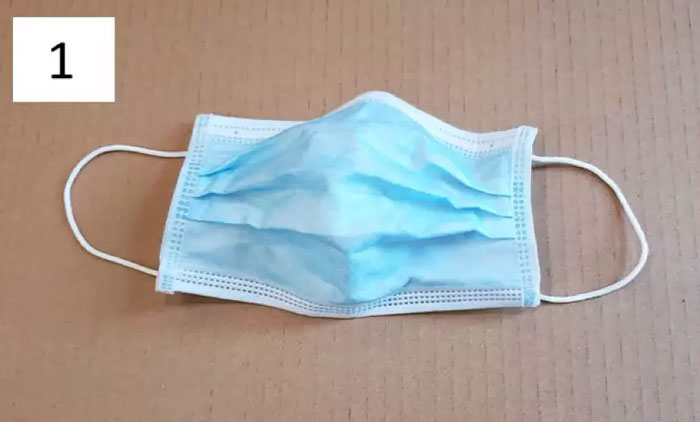
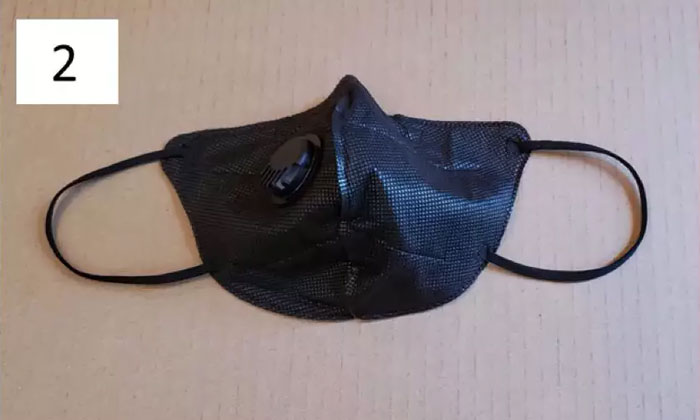
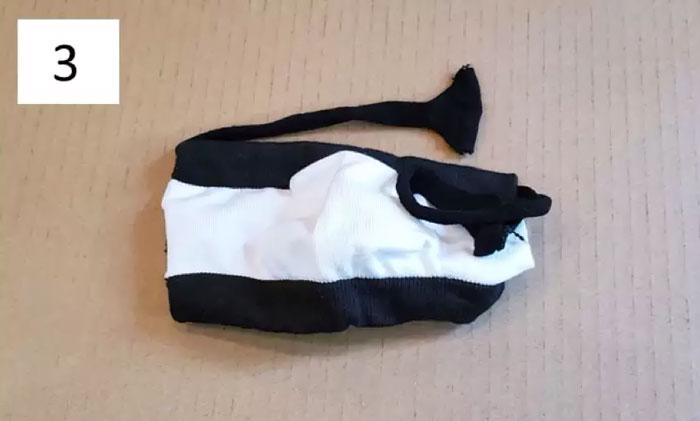
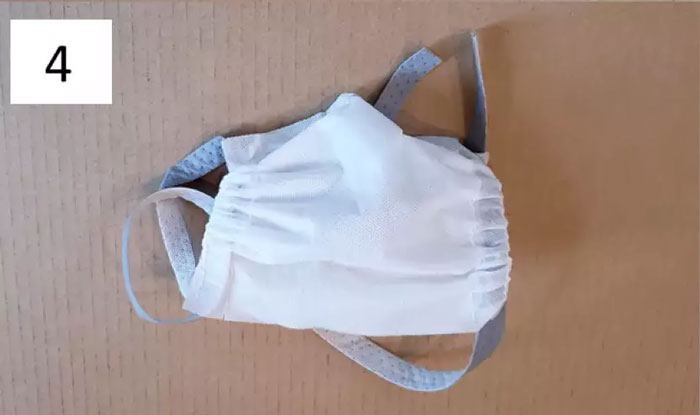


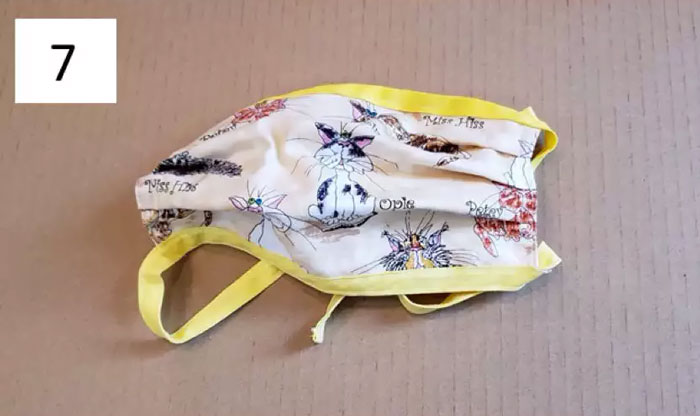

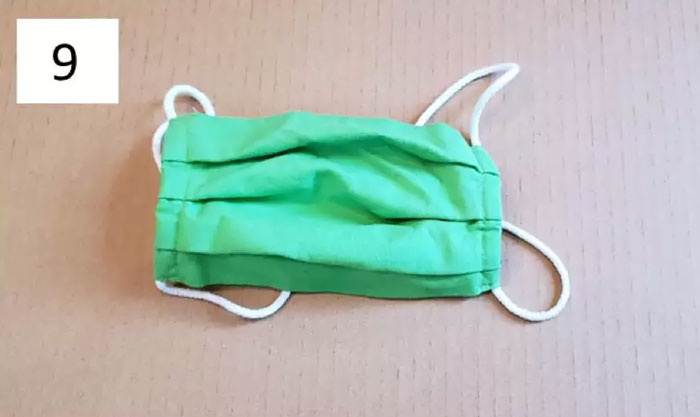
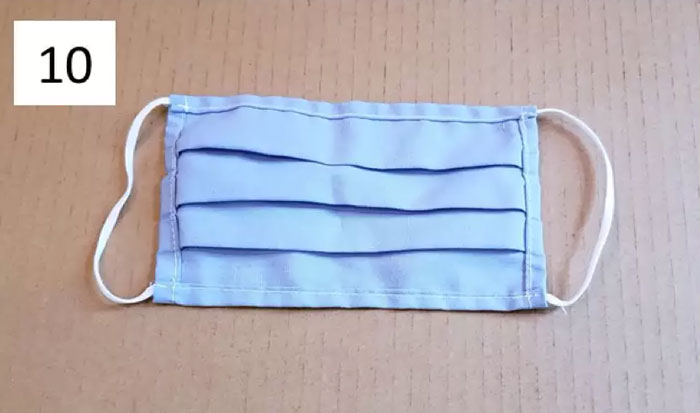
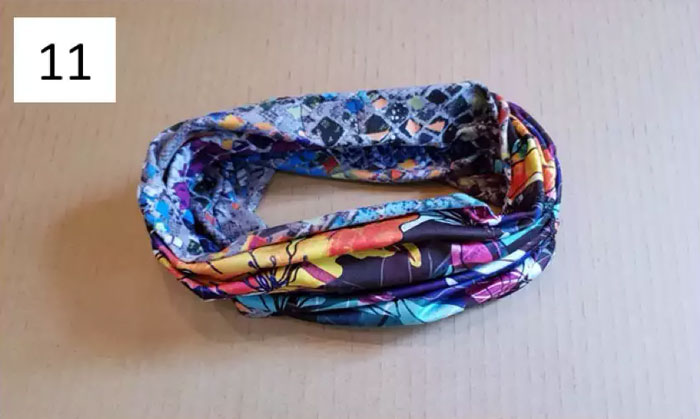
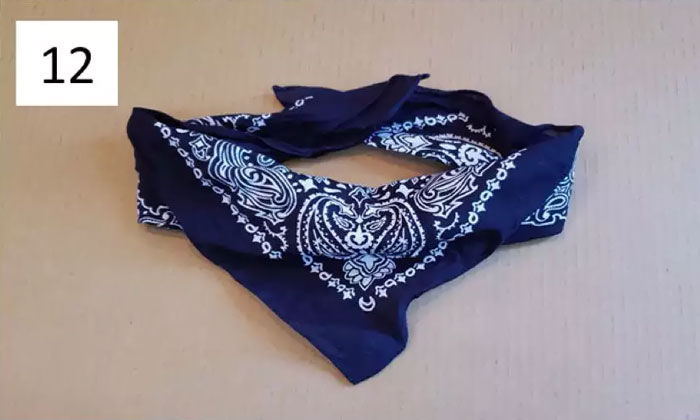
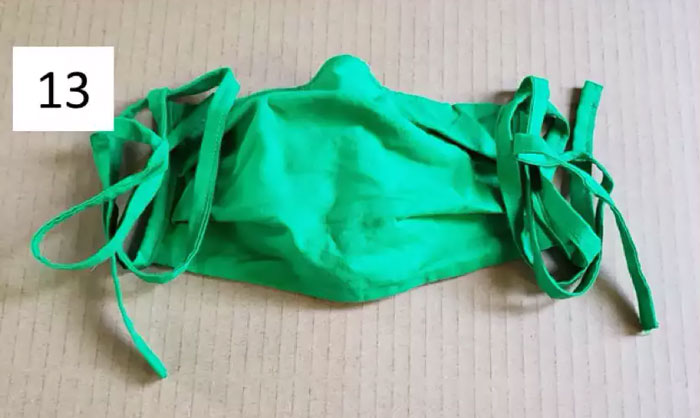

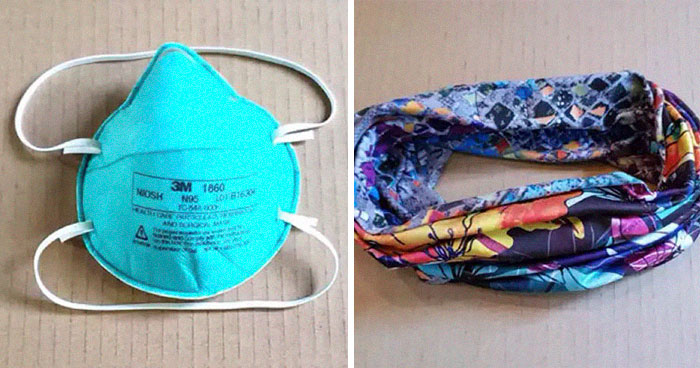
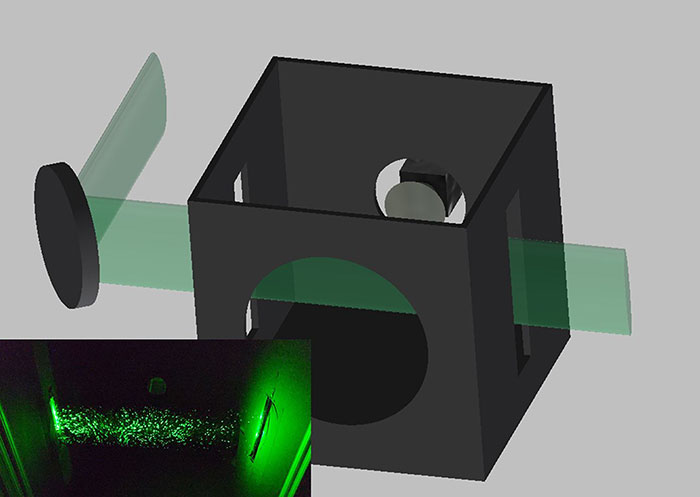
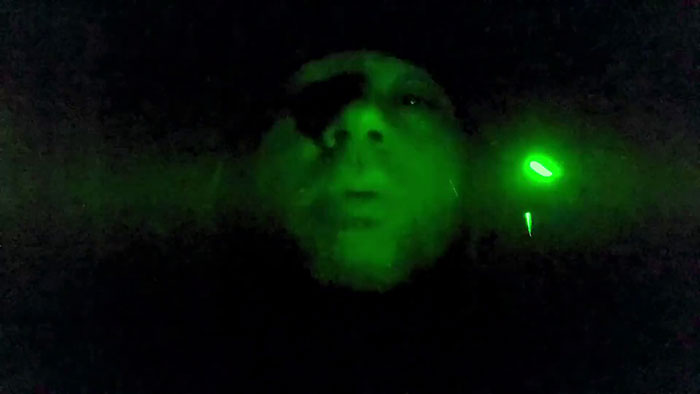
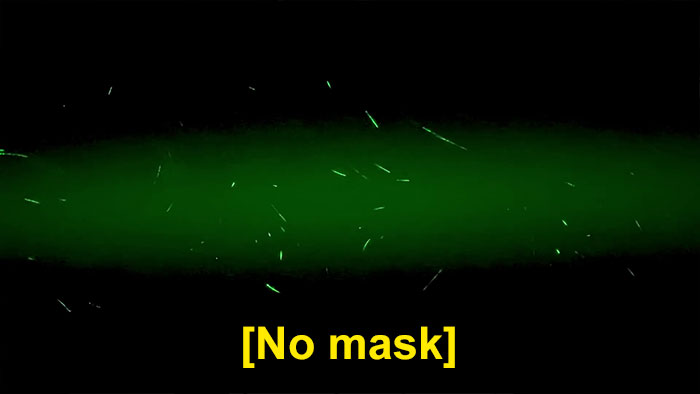
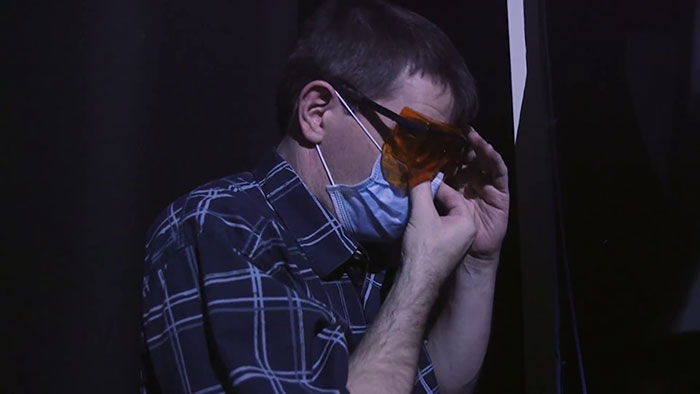
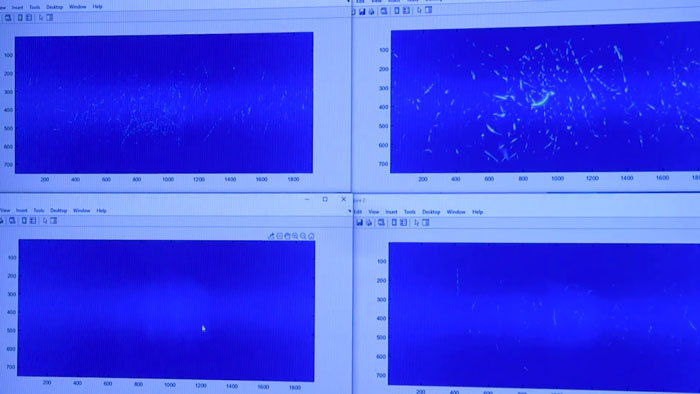
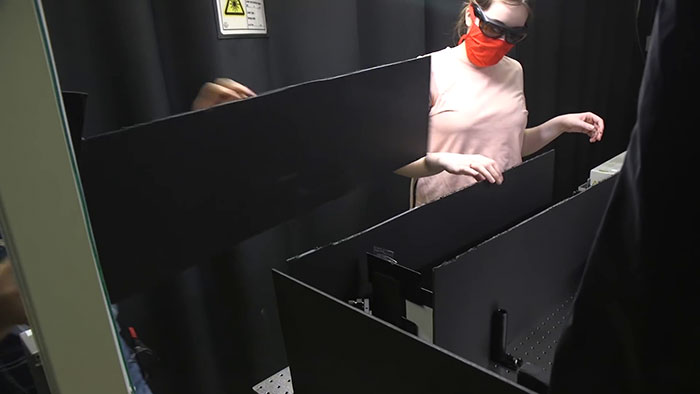


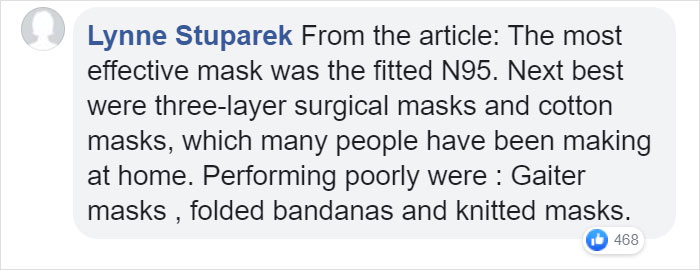

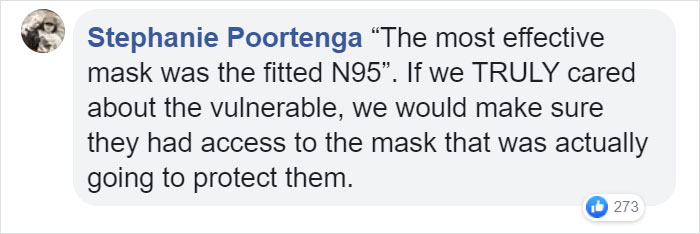




172
44